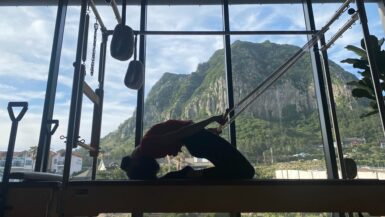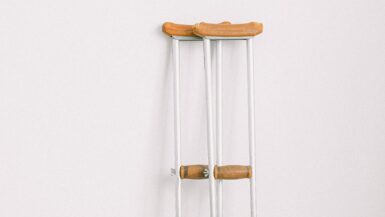Riding a bicycle in cold weather comes with challenges, but with the right gear, clothing, and techniques, it can be a comfortable and enjoyable experience. Cold-weather cycling requires extra preparation, but the rewards can be great, from the feeling of accomplishment to the stunning winter scenery. This article will cover the basics of preparing for cold weather riding, from the gear and clothing you will need to the techniques that will keep you warm and safe.
Bike Preparation
Regarding cold-weather riding, having the right gear can make all the difference. The three most essential pieces of equipment to prepare for cold weather riding are appropriate clothing, a quality bike, and the right accessories.
Choose the Right Bicycle
A bike that is well-suited for cold-weather use is essential for cold-weather riding. Look for features such as fatter tires for better traction in winter conditions, a longer wheelbase for improved stability, and weather-resistant components such as sealed bearings and rust-resistant hardware.
Select the Correct Clothing
Layering your clothing is an effective way to stay warm in cold weather riding. Choose a base layer made of synthetic material to help wick away sweat. Choose a breathable, friendly material such as wool or fleece for an insulating layer. Add an outer layer of waterproof, breathable fabric to help keep you dry. Complete your ensemble with a warm hat and gloves, preferably made of windproof and waterproof materials.
Pick the Necessary Accessories
For a comfortable and safe ride, several accessories can help you stay warm and secure in the cold. A pair of good-quality bike lights will help you to see and be seen more easily in low-light conditions. A robust lock is vital to keep your bike safe while riding. A fender, mudguard, or chainguard will help keep you and your bike cleaner in wet, muddy, or snowy conditions. Invest in some reflective items, such as a vest or helmet cover, to ensure you are as visible as possible.
Finally, don’t forget to bring a spare inner tube, tire levers, and a multi-tool to help you in an emergency.
Protective Gear
When preparing for cold weather riding, having the right gear and clothing is essential for staying safe and comfortable. This includes protective gear such as a helmet, gloves, and boots, as well as a few additional pieces of equipments like a good jacket and windproof pants.
Helmet
When riding in cold weather, a full-face or modular helmet is the best choice for protection. This type of helmet offers protection against the wind and protection from potential flying debris. When looking for a helmet, check the helmet’s rating and look for features such as a visor and ventilation system.
Gloves
It’s essential to have a pair of gloves specifically designed for cold-weather riding. These gloves should fit snugly and keep your hands warm and dry while providing enough grip to operate the handlebars and clutch. Make sure to look for gloves with a waterproof/breathable membrane to keep your hands dry and warm.
Boots
Sturdy, waterproof boots are essential for cold-weather riding. Look for boots with a grip sole, insulation, and waterproofing to keep your feet dry. Additionally, it’s vital to ensure the shoes fit correctly and are comfortable, as you don’t want your feet to get too cold or hurt during a ride.
Jackets and Windproof Pants
A good quality jacket and windproof pants are a must when it comes to keeping warm. Look for jackets that are made of windproof, waterproof, and breathable materials, as well as features such as adjustable cuffs and hoods to help keep you dry and warm. Additionally, windproof pants are an excellent way to keep the wind off your legs while riding.
Additional Gear
In addition to the essential protective gear, some additional equipment may be necessary for cold-weather riding. This includes a neck warmer, face mask, and balaclava to help keep your head warm, as well as heated gear like heated vests and gloves.
By preparing for cold weather riding with the right gear and clothing, you can ensure that you stay safe and comfortable while enjoying your ride. Whether riding in the cold or planning a winter-long excursion, having the right protective gear is essential for staying safe and warm.
Temperature Considerations
When preparing for cold weather riding, it is crucial to have the proper gear. This includes items such as a helmet, gloves, and foot warmers. A full-face helmet is recommended as it will have better protection from the cold. Gloves should be waterproof and windproof, preferably with a good grip. Foot warmers are also essential for those who ride in cold weather. These items will help keep the body warm and offer protection from the wind.
Cold Weather Clothing
When preparing for cold weather riding, proper clothing is essential to being comfortable. It is important to create multiple layers of clothing. The inner layer should be a thin, form-fitting material like polyester or fleece. The outer layer should be thicker, insulated material such as wool or a synthetic blend. The more layers you add, the better insulation you will have against the cold. Keeping the head, neck, and hands covered is also essential. A neck gaiter is a great way to keep your neck warm.
Cold Weather Riding Techniques
Some techniques can be employed to stay safe and comfortable when riding in cold weather. Maintaining a steady pace while riding is vital to avoid over-exertion, which can cause your body temperature to drop too low. It is also essential to stay hydrated to ensure your body can stay warm. Eating snacks and drinking warm liquids will help to raise the body temperature. Additionally, it is essential to take frequent breaks to allow the body to adjust to the cold weather. Finally, it is crucial to remain aware of the potential for hypothermia and frostbite. Finding shelter and warming up is essential if you feel too stiff.
Cold Weather Preparedness
When it comes to cold weather riding, being prepared is essential. Having the proper gear and clothing is vital to ensure that your body is well protected from the cold. It is also vital to be aware of the techniques for cold weather riding and be prepared for any potential dangers. By following the above tips, you should be able to safely and comfortably ride in cold weather.
Layering Techniques
Layering refers to adding multiple layers of clothing to your body to stay warm and protected while riding in cold weather. Layering helps to insulate your body by trapping air between the layers of clothing, creating a buffer between you and the cold air. By layering, you can adjust your clothing to conform to the changing temperatures throughout the day. Layering is essential for any cold weather riding, as proper layering can make the difference between an enjoyable or uncomfortable ride.
Types of Clothing to Layer
You should consider insulation and protection when layering for cold-weather riding. For insulation, you should look for fabrics that trap heat, such as wool and synthetic materials. For security, you should look for items that keep the wind and rain out, such as waterproof jackets and pants. Additionally, for cold weather riding, you should also consider gloves, hats, and neck warmers, as these can help keep your extremities protected.
Tips for Layering
When layering, it is essential to consider the different types of fabrics that you are using. Wool and synthetic materials are great for trapping warmth, while breathable waterproof fabrics can keep the wind and rain out. Additionally, it would help if you considered the weights of the materials you are using; lighter fabrics are ideal for keeping you warm, while heavier fabrics are better at keeping you dry. You should also consider the type of activity you will be doing; for instance, if you are going to be doing a higher-intensity activity, you should opt for lighter layers, as heavier layers can make you too hot.
Layering Techniques for Maximum Comfort
When layering for cold weather riding, it is crucial to consider the activity you will be doing and the temperature you will be riding in. If the temperature is freezing, you should opt for a few extra layers. You should also layer clothing with different weights of fabrics; for instance, you can layer a wool sweater with a heavier coat and a lighter jacket. You can also layer clothing with insulation and protection in mind; for instance, you can layer a wool sweater and a waterproof jacket to keep you warm and dry. Finally, you can use accessories such as neck warmers and hats to help keep your extremities warm and toasty.
Conclusion
Layering is integral to cold weather riding, as proper layering can make the difference between an enjoyable and uncomfortable ride. There are a few fundamental techniques to consider when layering, such as the type and weight of the fabric used and the activity you will be doing. Considering these considerations when layering, you can ensure maximum comfort and protection when riding in cold weather.
Safety Precautions
When preparing for cold weather riding, choosing the proper protective gear is essential. Before going out, ensure you have a full-face helmet, gloves, snow pants, insulated boots, and a winter jacket. Safety should always be your top priority when riding in cold weather, and having the right protective gear is vital to staying safe.
Layering for Maximum Warmth
When riding in cold weather, it is essential to wear multiple layers to keep your body warm and insulated. Start with a lightweight thermal layer, a mid-layer of wool or fleece, and a waterproof outer layer. Make sure each layer fits comfortably and is breathable. Avoid wearing too many layers, as this can restrict your movements.
Choosing the Right Clothing
Cold weather riding requires specific clothing. Choose breathable and waterproof clothing that will keep you warm enough without overheating. Opt for a bright-colored outfit that will help you stand out in a crowd. Avoid wearing bulky or restrictive clothing, which can limit your riding movements. A well-fitted pair of leather or mesh gloves will help keep your hands warm.
Staying Visible to Other Riders
When riding in cold weather, it is important to stay visible to other riders. Wearing bright-colored clothing or equipping your bike with reflective signs or lights can help increase your visibility on the road. Make sure to keep your headlights on at all times, even during daylight hours, so that other riders can see you.
Safety Precautions
It is vital to take necessary safety precautions when riding in cold weather. Always reduce your speed, check your bike for essential repairs before riding, and ensure you are familiar with the roads you will be riding on. Keep warm and hydrated while riding, and take breaks as necessary. It is also essential to wear the proper protective gear, like a full-face helmet, gloves, snow pants, insulated boots, and a winter jacket. Taking the appropriate safety precautions can help you stay safe while riding in cold weather.
Riding in Winter Conditions
When preparing for cold weather cycling, the right gear can make all the difference. Start by investing in a quality winter bike explicitly designed to ride in cold temperatures. Bikes built with winter-specific features such as guards over the drivetrain, fat tires, and hydraulic disc brakes with rotors that include pre-drilled holes for improved heat dissipation make winter riding more comfortable and reliable.
Layering Up for Optimal Warmth and Comfort
Choose your winter cycling clothing with the same care and attention to detail. Don’t just select garments based on their appearance and cost; also consider how fit and function can keep you warm and comfortable as you ride. The key is to layer up with items designed explicitly for cold-weather ridings, such as fleeces, soft shells, mid-layers, and windproof and waterproof jackets. Make sure your lower body is protected with warm pants or tights, and don’t forget the neck gaiter, ear warmers, and balaclava to protect your head and face from the chill.
Tackle Winter Riding with the Right Techniques
In addition to selecting the proper winter riding gear, riders can employ techniques to make cold-weather riding more comfortable. Different cycling techniques, such as spinning in relatively high gear and varying cadence, will help keep your body temperature regulated as you ride. Increasing your effort during intervals can also help fight off the cold and supplement your layers of winter cycling clothing.
When riding in colder weather, consider increasing your food and water intake so your body can maintain an adequate energy level. Also, it is crucial to ensure your cold-weather cycling gear, clothing, and bike are prepared and maintained. Lubricate your chain, check the pressure in your tires, and check your brakes and drivetrain to ensure all components are in good working order. By following these simple steps, you can ensure that your winter rides will be safe and enjoyable.
Tips to Optimize Your Cold Weather Riding Experience
Riding in cold weather can be a daunting task for a cyclist, but with the right gear, clothing, and techniques, it can be a safe and enjoyable experience. Layering is the key to staying warm, and for riding, a good base sequence should include a moisture-wicking, close-fitting first layer, a warming middle layer, and a wind- and water-resistant outer layer. Insulated gloves, booties, and balaclava or face masks can help maintain an ideal body temperature for protection for hands, feet, and head. Commuters should consider fenders and mudguards to avoid the accumulation of water and mud, while other winter accessories like lights and reflective gear can make riding safer. With these elements in equipment, a cyclist should be well-prepared to brave the cold and enjoy the unique beauty of winter riding.






Leave a reply